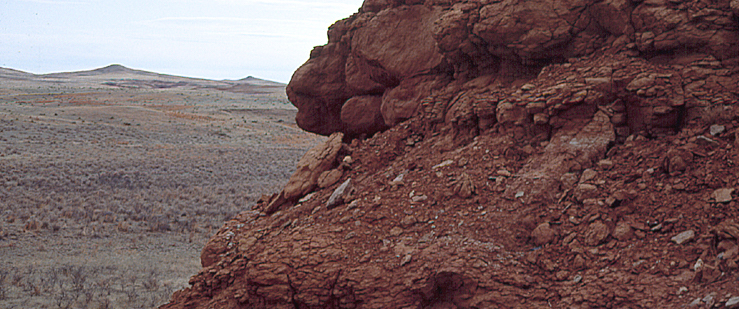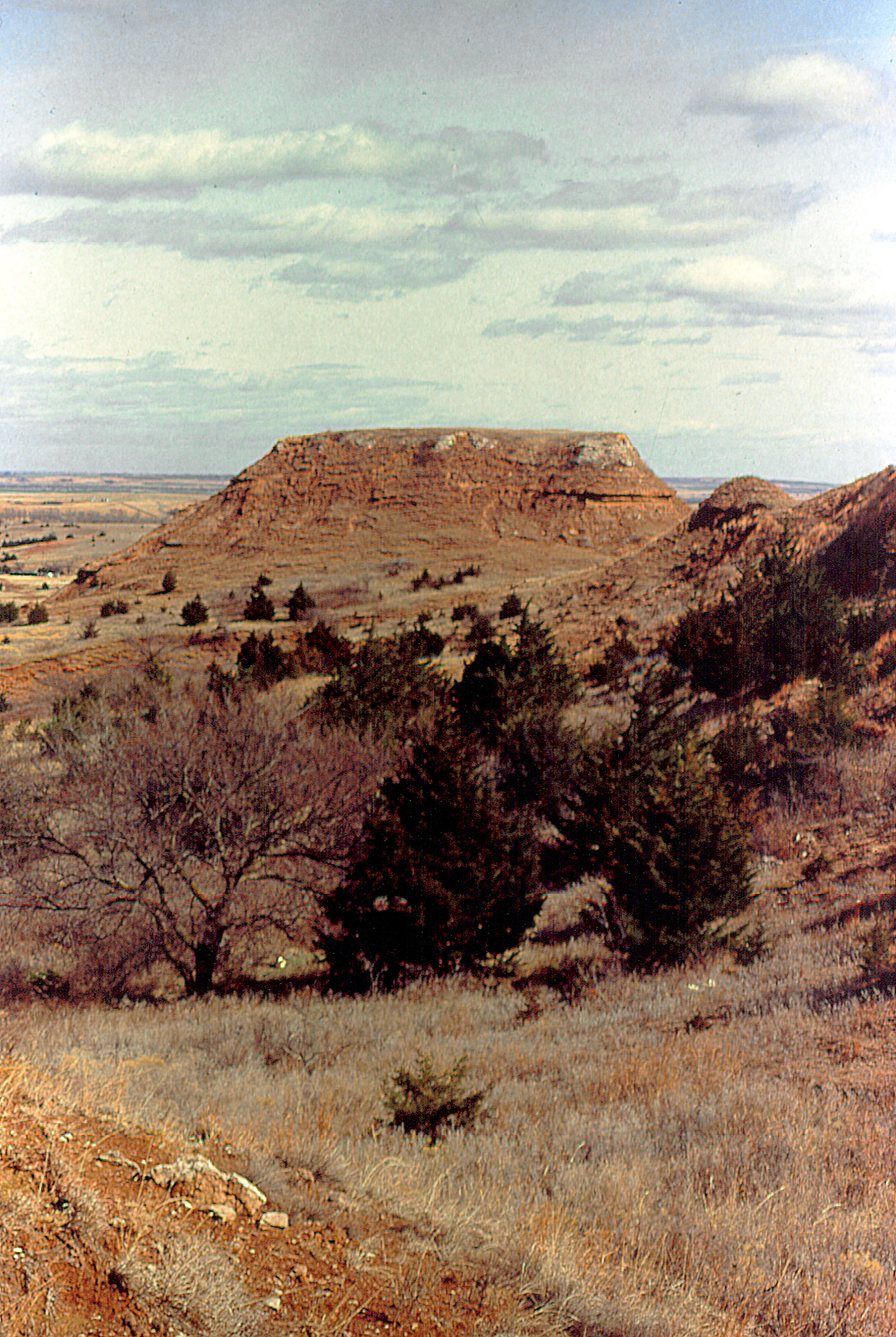Red Hills

 In contrast to the stereotypical notion that Kansas is pancake flat and flaxen, the Red Hills region is rugged and red. Soils, shales, siltstones, and sandstones in the region get their color from iron oxide (rust), which turns bright red when exposed to oxygen. The rocks formed from sediment deposited in the remnants of an inland sea about 260 million years ago. The soils formed, in part, from sediment shed from the rocks during erosion.
In contrast to the stereotypical notion that Kansas is pancake flat and flaxen, the Red Hills region is rugged and red. Soils, shales, siltstones, and sandstones in the region get their color from iron oxide (rust), which turns bright red when exposed to oxygen. The rocks formed from sediment deposited in the remnants of an inland sea about 260 million years ago. The soils formed, in part, from sediment shed from the rocks during erosion.

Like the Flint Hills farther east, the Red Hills rocks were formed during the Permian Period. Unlike the rolling landscape of the Flint Hills, which are mainly composed of thick and cherty limestone, the Red Hills' butte-and-mesa topography was influenced by layers of gypsum. More resistant to weathering than the underlying shales and siltstones, the gypsum caps the hills and protects the less resistant layers below. Covering much of Clark, Barber, and Comanche counties, the Red Hills, sometimes called the Gyp Hills, also spill over into adjacent counties in Kansas and Oklahoma.
Although gypsum in the Red Hills is more resistant to weathering than the other rocks and sediments, it is an evaporite left behind as the seas dried up and, thus, soluble in water. As a result, numerous caves have formed in the region. Of the 528 caves cataloged in the state by the Kansas Speleological Society, 128 are in Comanche County and 117 are in Barber County. The gypsum caves are typically 100 to 300 feet long. Small natural bridges also are found throughout the Red Hills. One of the largest—35 feet wide and 55 feet deep—stood 12 feet above the stream that helped create it south of Sun City before collapsing in 1962.
Dissolution of gypsum, as well as salt, often occurs underground, creating a void. The ground above then sinks, or collapses, into the void. In Clark County, U.S. Highway 283 runs 1.5 miles across the floor of Big Basin, a massive depression. Just to the east, another depression called Little Basin is about a half mile in diameter. Within Little Basin is a smaller sink, a deep, spring-fed pool known as St. Jacob's Well.
Besides having a significant influence on the region's topography, gypsum contributes to the region's economy. First mined southwest of Medicine Lodge in 1888, it is still being extracted from an open-pit quarry and an underground mine north of Sun City. Gypsum from those locations is used in cement, sheet rock, and plaster of Paris.
In the subsurface, a geologic feature that runs along the western edge of Barber County called the Pratt Anticline likely contributes to minor earthquake activity. Movement along the anticline is the probable source of an earthquake on January 6, 1956. The strongest impact was recorded in the Pratt County community of Coats, just across the Barber County line, where a bed reportedly bounced across the floor at a hotel.
The Big Basin Preserve, managed by the Kansas Department of Wildlife, Parks and Tourism, encompasses Little Basin and a portion of Big Basin and provides public access to the two sinkhole features on the western edge of the region. Clark State Fishing Lake, on the boundary between the High Plains and the Red Hills regions, provides a view of Permian red beds as well as younger Ogallala Formation mortar beds characteristic of the High Plains.
Resources
Big Basin Preserve, Kansas Department of Wildlife, Parks and Tourism
Buchanan, R., and McCauley, J. R., 2010, Roadside Kansas: A Traveler's Guide to its Geology and Landmarks: Lawrence, Kansas, University Press of Kansas, 392 p.
Caves in Kansas: Kansas Geological Survey Educational Series 9 (1993).
GeoFacts: Red Hills (pdf)